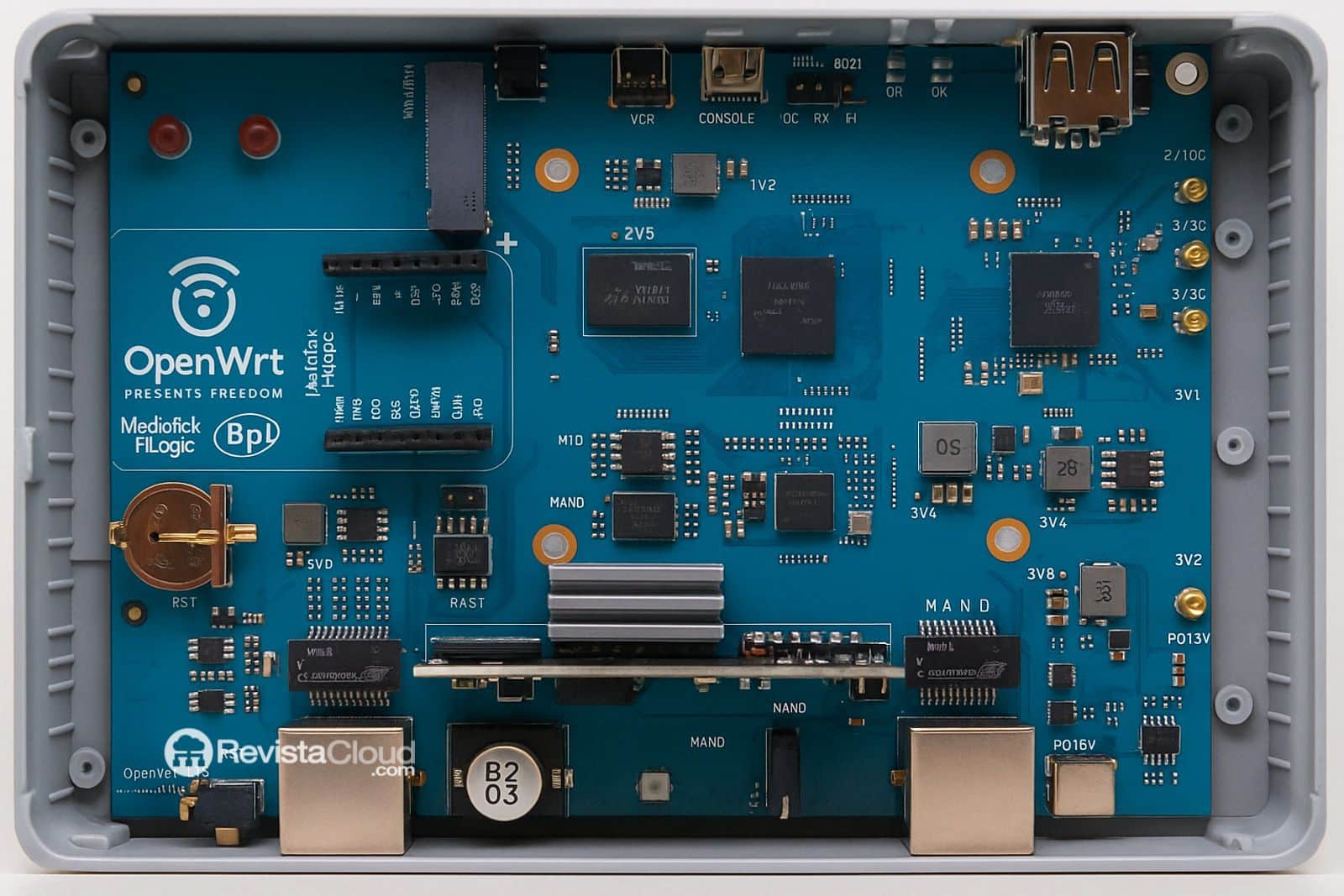More and more manufacturers and advanced users are looking for flexible, secure, and adaptable firmware for home and professional routers. Three projects are competing for the spotlight: OpenWRT, RDK-B, and prplOS.
The world of home and enterprise routers is undergoing a silent yet intense transformation. Behind the simple interfaces that allow internet browsing or streaming shows, a battle is being fought among three firmware options with very different approaches, communities, and purposes: OpenWRT, RDK-B, and prplOS.
OpenWRT: The Hacker Community’s Favorite
For years, OpenWRT has been the preferred firmware for advanced users looking to maximize their routers’ capabilities. Based on Linux and featuring a package management system handled by opkg, it allows for complete customization of the device, from firewall settings to VPN servers, as well as traffic control and advanced statistics.
Advantages:
- Great modularity
- Extensive community and documentation
- Compatible with hundreds of router models
Disadvantages:
- Steep learning curve
- Requires technical knowledge for advanced configuration
The official OpenWRT site offers a tool for selecting firmware and precompiled downloads ready to install on compatible routers, along with detailed documentation for developers who want to compile their own images.
RDK-B: Firmware Designed for ISPs
Originally developed by Comcast, the Reference Design Kit for broadband (RDK-B) has been adopted by operators like Charter and Liberty Global to standardize the software for their routers and set-top boxes. It is based on the Yocto project and stands out for its telemetry capability, remote analysis, and centralized management.
Advantages:
- Enterprise-level security
- Integration with ISP management platforms
- Support for TR-069/TR-369 and containerized services
Disadvantages:
- Very limited customization for end users
- Dependency on corporate environments
Access to RDK-B is usually reserved for developers within the telecommunications ecosystem, although there are public repositories for components and professional deployment documentation.
prplOS: Efficiency and Security for IoT
prplOS, driven by the prpl Foundation and supported by companies like Qualcomm, Broadcom, and Intel, is presented as a lightweight, secure alternative aimed at embedded devices. Its microvisor-based architecture allows for resource isolation, and its compatibility with EasyMesh positions it as an ideal solution for home mesh networks.
Advantages:
- Security by design
- Low resource consumption
- Modularity for manufacturers
Disadvantages:
- Still a small community
- Limited package ecosystem compared to OpenWRT
Thanks to its focus on virtualization and privilege separation, prplOS is particularly suited for operator gateways, IoT devices, or environments with high security requirements.
Technical Comparison
| Feature | OpenWRT | RDK-B | prplOS |
|---|---|---|---|
| System Base | Linux | Linux | Linux |
| Package Management | opkg | custom | Yocto |
| Focus | consumer, DIY | ISP, operator | operators, IoT |
| Security | configurable, community-driven | controlled by ISP | isolation-based |
| Interface | LuCI web, CLI | Lightning UI | CLI, integrated APIs |
| Modification | very high | low | moderate |
Which Firmware to Choose?
Choose OpenWRT if…
- You want absolute control over your network
- You are an open-source enthusiast
- You’re not afraid of manuals and technical forums
Choose RDK-B if…
- You work for a telecommunications operator
- You’re looking for scalability, remote support, and network analysis
- You prefer closed and managed environments
Choose prplOS if…
- You manufacture embedded devices or operator gateways
- You prioritize security, performance, and virtualization
- You need a modern solution without excessive complexity
Conclusion
The router firmware is much more than a forgotten piece of the system: it is the true heart of home and enterprise networks. Choosing the right one can make a difference in performance, security, and flexibility. OpenWRT remains the king for advanced users, RDK-B dominates in operator environments, and prplOS emerges as a modern alternative in the IoT world.
No matter your choice, there is a universal recommendation: change the default password. Because no firmware can save an unsecured network due to negligence.
Source: PRPLos, OpenWRT, and pyjamabrah

